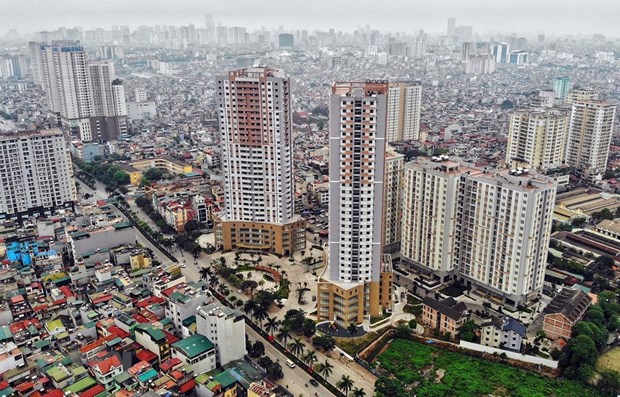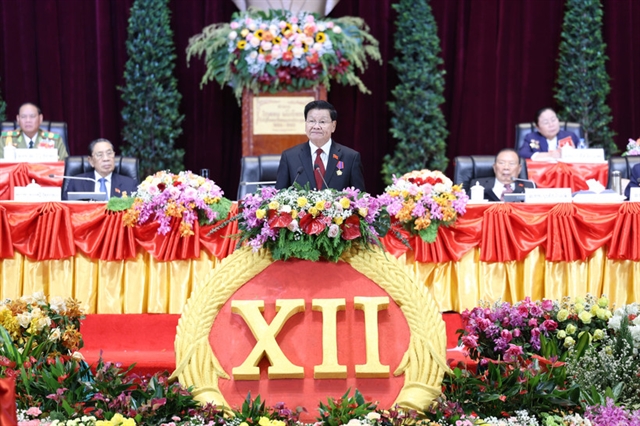 Society
Society

 |
| Under the draft national master plan, the capital city of Hà Nội is proposed as the growth pole in the driving force area - the triangle Hà Nội - Hải Phòng - Quảng Ninh in northern key economic region. VNA/VNS Photo Danh Lam |
HÀ NỘI — Prime Minister Phạm Minh Chính emphasised the importance of detailed planning work at a meeting of an evaluation council for the national master plan in 2021-2030 with a vision to 2050 in Hà Nội on Wednesday.
“Planning plays an important role in development,” he said, adding that the national master plan for Việt Nam at this time is difficult as it is the first-ever national master plan which concretised the orientations outlined by the 13th National Party Congress and other documents of the Party Central Committee.
He said that first of all, it is necessary to make clear the differences between the plan with other ten-year development strategies or five-year national socio-economical development programmes.
The formulation of the master plan must adhere to the guidelines, policies and laws of the Party and State, including the Law on Planning, he said, urging planners to make it feasible, effective, “easy to read, easy to remember, easy to do, easy to evaluate and easy to monitor and test”.
With innovative thinking and strategic vision, the national master plan must clearly identify the country’s distinctive potential, opportunities and competitive edges, working out suitable solutions to optimise all resources, the Government leader said.
He also underlined the feasibility of the master plan, adding that for this reason, the evaluation of the draft master plan is all the more important.
The evaluation council for the national master plan was set up last month under the PM’s Decision 965/QD-TTg with Deputy Prime Minister Lê Văn Thành as its chairman.
Minister of Planning and Investment Nguyễn Chí Dũng said the national master plan is the first of its kind that was drafted in accordance with the 2017 Planning Law.
“Developing the planning is a new, very important, difficult, complex, unprecedented task that we do not have much experience,” Dũng said, adding that it was also a great opportunity for Việt Nam to comprehensively re-evaluate conditions for national development and then identify spaces, roadmaps and resources for the development.
Dũng said that during the drafting process, the ministry coordinated with 16 ministries and sectors to develop the National Master Plan Orientation Report which includes opinions, objectives and priority orientations for development). The report has been discussed and commented on many times by the Standing Government, the Government, and the Government Party Committee.
On that basis, the Ministry of Planning and Investment coordinated with ministries and sectors to build 41 planning components. They studied, integrated and completed a draft National Master Plan Report.
The ministry also coordinated with the World Bank to hold numerous discussions with the participation of domestic and international experts. The draft has also been published on the ministry’s portal for public feedback.
Members of evaluation council agreed on forming and prioritising economic corridors and industrial belts and main urban centres. Accordingly, the master plan focuses on forming economic corridors along the North-South axis and East-West direction which is based on locations of highways, railways, seaports, international airports, international border gates, urban areas, and economic hubs.
Industrial and urban belts around Hà Nội and HCM City associated with international gateways will be given priority to develop.
The members also agreed with breakthroughs in infrastructure development which prioritises the development of transport infrastructure networks, including urban transport in Hà Nội and HCM City, energy, and telecommunications in association with forming economic corridors and building synchronous and modern infrastructure in the driving force areas and growth poles of key economic regions.
Growth pole refers to the concentration of highly innovative and technically advanced industries that stimulate economic development in linked businesses and industries. These concentrations of industries often affect the economies of geographical areas outside their immediate regions.
The evaluation council agreed with the point of view, that the main ideology of the National Master Plan that is by 2030, investment should be effectively and concentratedly on key areas. Then, the investment would be gradually given to ensure harmony, sustainability and balance among regions and localities by 2050.
It is necessary to concentrate on developing the growth driving areas and growth poles. Specifically, in the northern key economic region, the driving force area is the triangle of Hà Nội - Hải Phòng - Quảng Ninh, in which, the capital Hà Nội is the growth pole. In the southern key economic region, the growth driving area is the quadrangle of HCM City - Bình Dương - Đồng Nai and Bà Rịa - Vũng Tàu, in which HCM City is the growth pole. VNS




